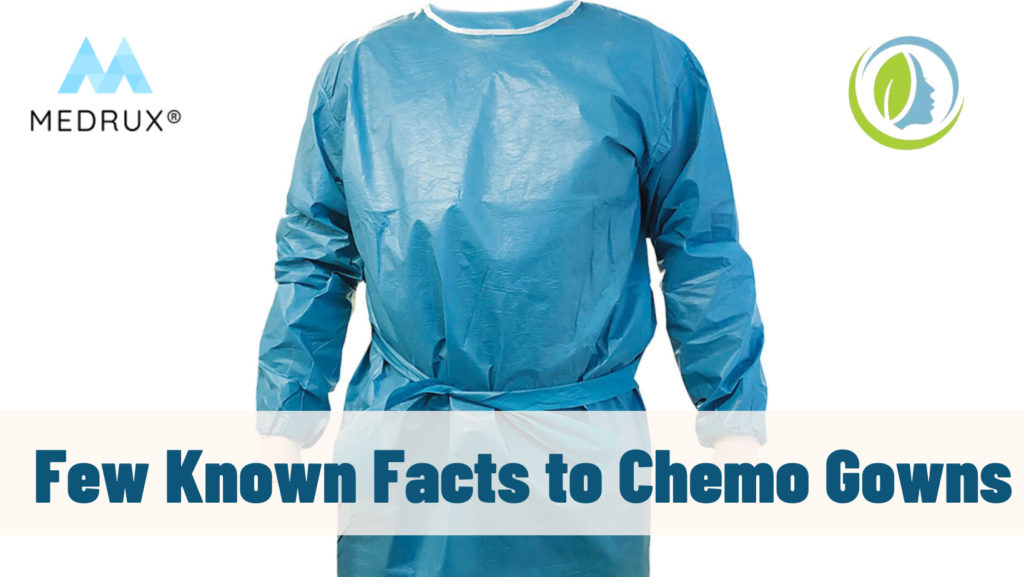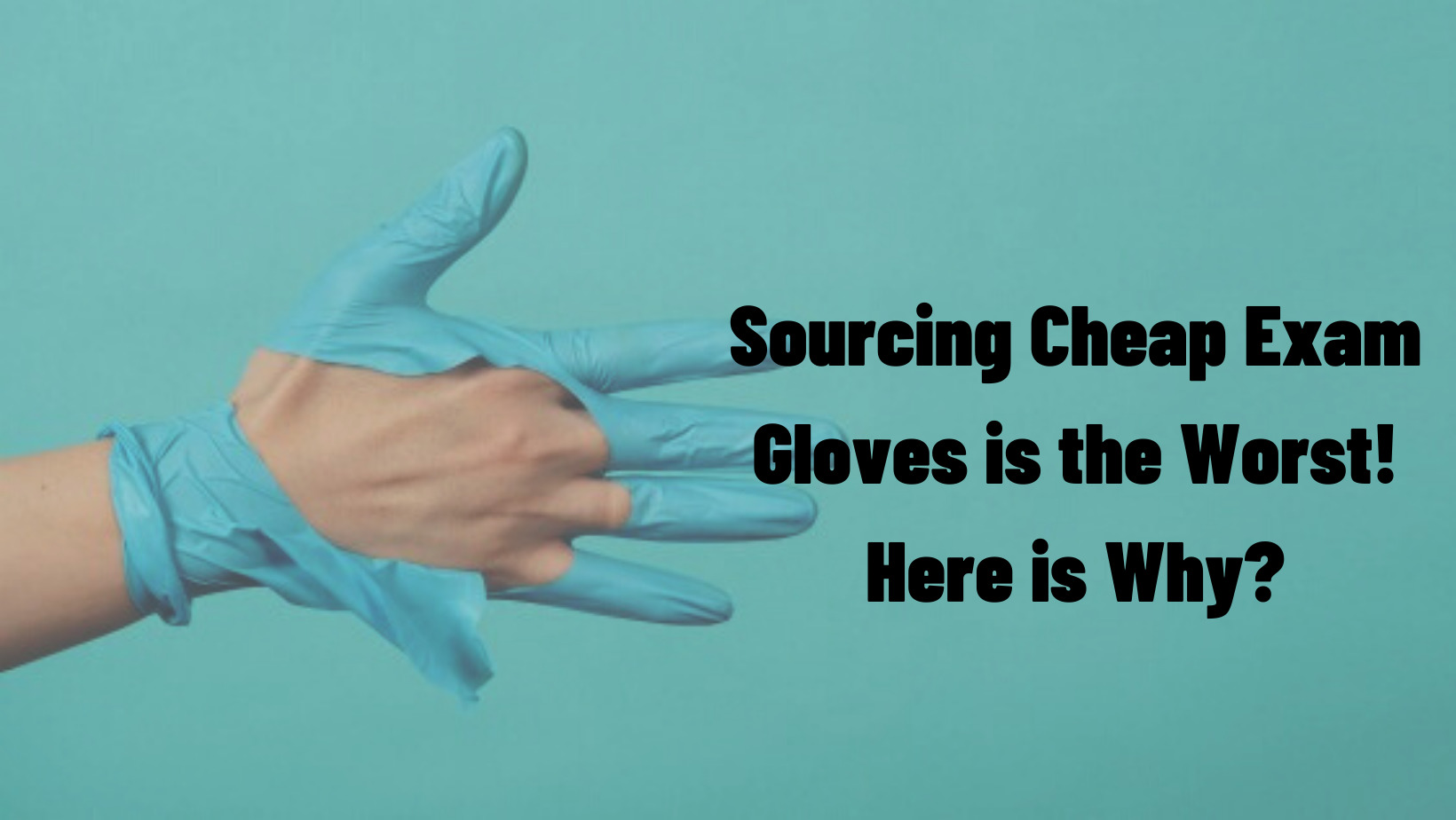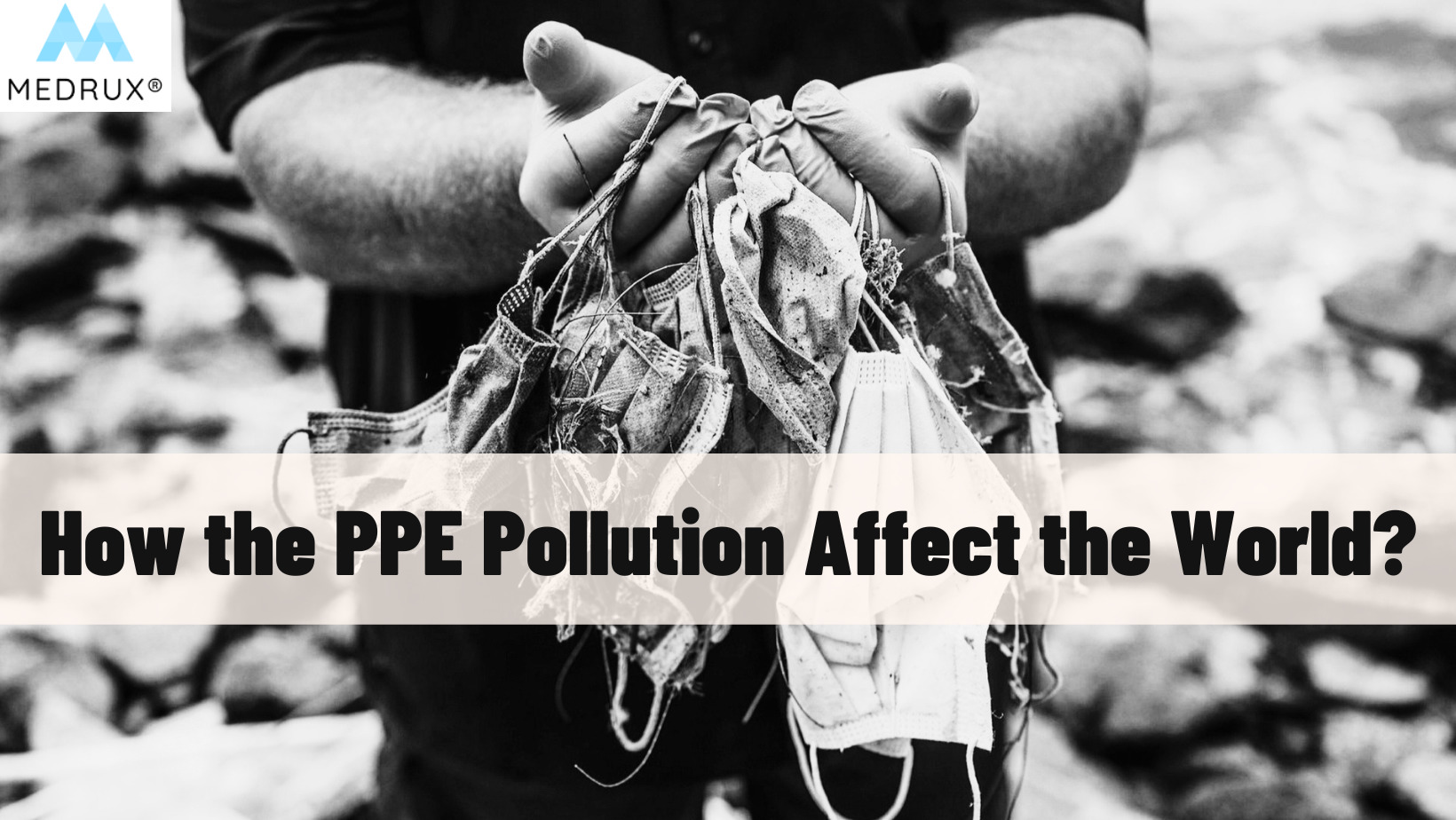Between 2018 and 2040, the number of patients requiring first-course chemotherapy annually will increase from 9·8 million to 15·0 million, a relative increase of 53% (1).
Chemotherapy saves the lives of cancer patients.
However, when approved safe handling rules are not followed, chemotherapy medications can cause cancer, reproductive issues, and organ damage in employees exposed to them.
Everyone dealing with such hazardous drugs is at risk.
Wearing the appropriate personal protective equipment is mandatory if you work in an area where HDs are used.
But how to select the appropriate chemo gowns and chemo gloves? What is the best PPE? And how to prevent exposure and cross-contamination for myself and my beloved ones?
This article will cover the following topics:
- What is a Hazardous Drug?
- Routes to Exposure to Hazardous Drugs
- What are the Results of Exposure to Hazardous Drugs?
- How to Protect Yourself if You are Dealing with Chemotherapy Drugs?
- How can I Select Appropriate PPE?
- Recommendation for chemo gowns
- How to Choose the Right-Hand Protection While Using Chemotherapy?
- Measures to Prevent Exposure and Cross Contamination
What is a hazardous Drug?
A drug is hazardous when it causes harm to a person.
Drugs are classified hazardous when they fulfill any of the following six characteristics (2):
- Genotoxicity: Having the capacity to alter or mutate genetic material, a mutagen.
- Carcinogenicity: Having the potential to cause cancer in humans, animal models, or both.
- Teratogenicity: Having the potential to lead to prenatal malformations or developmental problems
- Fertility impairment or reproductive toxicity
- Severe organ toxicity at low doses
- Chemical structure and toxicity profile that mimics existing drugs determined to be hazardous by the five previous criteria
Antineoplastic medicines, used to treat cancer, make up more than half of all dangerous pharmaceuticals.
So, how can a healthcare staff get exposed to such drugs?
Routes to Exposure to Hazardous Drugs
The medications can treat rheumatoid arthritis, psoriasis, multiple sclerosis, and viral disorders, including HIV and cancer.
Activities such as drug manufacturing, administration of drugs, dealing with patient waste, transportation, garbage management, or removing messes may result in exposure to hazardous medicines.
The following activities may expose people to substances through skin contact, skin absorption through handling patient waste, coming into direct contact with the drug, coming into indirect contact with contaminated surfaces, inhalation of aerosols and drug particles, ingestion by not washing one’s hands before eating or using infected pens and pencils, and accidental injection through needles or other sharps that puncture the skin.
Everyone dealing with such hazardous drugs is at risk.
The workers in the receiving department are where it all begins.
They rely on the warning markings outside of shipping and transport containers to help them understand what they are handling.
In addition, pharmacists are at risk of exposure when handling the medication for storage, preparation, or transportation to the correct unit.
For instance, if they are not wearing gloves or if the drug permeates through the gloves, it may be absorbed via their skin.
Exposure can also happen when they look after the patient following therapy.
Unfortunately, specific drug residues can last for up to one week.
The presence of drug residue in bodily fluids and manure, such as saliva, sweat, urine, feces, and vomit, can last up to a week.
As a result, nurses, housekeeping, and maintenance employees may be at risk.
Additionally, various support personnel, including the dietary staff, may unintentionally come into contact with exposure at different times.
What are the Results of Exposure to Hazardous Drugs?
Workplace exposure to hazardous drugs can cause acute and chronic health effects, such as skin rashes, adverse reproductive outcomes (including infertility, spontaneous abortions, congenital malformations), leukemia, and other cancers.
How to Protect Yourself if You are Dealing with Chemotherapy Drugs?
Do not compromise your health; wear personal protective equipment (PPE).
What is the PPP required to protect yourself from exposure to such drugs?
When handling such hazardous drugs, including when performing the following tasks: receiving, storing, and transporting the product; compounding and administering the medication; handling bodily fluids after administration; deactivating and decontaminating the product; cleaning and disinfecting the product; and managing spills and disposing of waste.
Here are the recommendations from the National Institute for Occupational Safety & Health (NIOSH) for the required PPE for handling all types of hazardous drugs during different stages of use (3)
| Type of use | PPE needed |
| Preparation of drug within a Containment Primary Engineering Control (C-PEC), including cutting, crushing, handling uncoated tablets, and compounding oral, topical, inhaled, subcutaneous (SC), IV, intramuscular (IM), solutions, or aerosols |
|
| Administration of all drug formulations, including oral, topical, inhaled, SC, IV, IM
solutions or aerosols, EXCEPT intact tablets/ capsules |
|
| Disposal, cleaning, spills, and exposure to the dung of patients receiving drugs |
|
So How To Select Appropriate PPE?
It is advised that the following criteria test the apparel to determine the best choice of gowns and gloves for usage with cytotoxic drugs.
Recommendation for chemo gowns
According to some research, gowns or suits with polyethylene or vinyl coverings provided sufficient splash protection and stopped the penetration of anti-cancer chemicals.
- Gowns must be discarded immediately after contamination or when leaving the patient care area.
- It must be worn when handling the bodily fluids of patients who have received hazardous drugs during the last 48 hours, regardless of the mode of administration.
- The gowns should feature knit or elastic cuffs and a solid front (back closure).
- Laboratory coats and other cloth materials should not be utilized since they absorb liquids and do not create a sufficient barrier against HDs.
It would be best if you did not compromise on the quality of the PPE safety but on choosing the proper hand protection while using chemotherapy. Let’s see.
How to Choose the Right-Hand Protection While Using Chemotherapy?
Verifying if a glove offers sufficient protection
Glove deterioration, penetration, permeation, and permutations can be used to measure a glove’s resistance to chemicals.
-
Degradation
It occurs when a chemical reacts with the glove material.
This results in changes to the glove’s physical and chemical properties, such as swelling, shrinkage, color changes, hardening or softening, stiffening or brittleness, texture degradation, loss of elasticity, and loss of tensile strength.
-
Penetration
Is the movement of bulk chemicals through glove seams, chafes, holes, zippers, apertures, and material-preliminary micro holes.
After exposure starts, challenging chemical penetration may also result via molecular and mechanical change, such as hole creation in the glove and automatic instability.
-
Permeation
It is the process of a chemical penetrating a protective glove material on a molecular level. Permeation could happen with no apparent consequences for the materials used in gloves.
There are specific standards to evaluate the protective capacity of the gloves.
These specifications are the American Society of Testing and Materials (ASTM) D6978 Assessment of Medical Glove Resistance to Chemotherapy Drug Permeation and ASTM F739 Standard Test Method for Permeation of Liquids and Gases through Protective Clothing Materials under Conditions of Continuous Contact, respectively.
The overall test technique for chemical permeation testing is ASTM F739. However, ASTM D6978 has different specifications that are particular to chemotherapeutic medications.
ASTM F739
This test method measures the permeation of liquids and gases through protective clothing materials under continuous contact.
ASTM D6978
This practice covers a protocol for assessing the resistance of medical glove materials to permeation by potentially hazardous cancer chemotherapy drugs under conditions of continuous contact.
Based on the permeation (breakthrough) of nine chemotherapy drugs through the glove material over a certain period, an assessment is made.
The ASTM D 6978-05 “Standard Practice for Assessment of Resistance of Medical Gloves to Permeation by Chemotherapy Medications,” adopted in 2006, sets guidelines for gloves for handling chemotherapy drugs in the US.
The seven chemotherapeutic medicines required are Carmustine, cyclophosphamide, doxorubicin, etoposide, 5-fluorouracil, paclitaxel, and thiotepa to be tested on gloves, as well as two extra medications.
While ASTM F739 is used as the basis for the test technique in ASTM D 6978-05, ASTM D 6978-05 has ten times stricter chemical permeation requirements.
Therefore, selecting medical gloves with low permeability to antineoplastic agents is important to prevent healthcare professionals from unintended exposure.
Additional precautions include wearing double gloves and thicker gloves.
The effects of protective gloves are dependent on glove material thickness. Thicker gloves provide more excellent protection and longer breakthrough time gloves.
Double gloving (wearing two pairs of gloves) or inserting a glove liner between the two pairs of gloves significantly decreased glove breaks in the surgical environment.
A study that assessed the dynamic permeation testing revealed that the highest resistance to the studied chemotherapeutic medicines was found in natural rubber latex gloves with a thickness of at least 0.24.
Extra-thick gloves appear to be as effective as wearing two pairs at once.
But unfortunately, such increased thickness in gloves may impact the user’s skill and flexibility when performing specific jobs.
Now the question is whether medical gloves protect against chemotherapy drugs. Let’s see.
Do Medical Gloves Protect Against Chemotherapy Drugs?
Gloves are a cornerstone of prevention for healthcare personnel in cancer and hematology.
Medical gloves protect patients and medical personnel from the cross-contamination of bacteria and chemicals by acting as a barrier to infectious materials and other contaminants.
The barrier’s integrity is crucial in selecting suitable gloves.
The three most often used raw materials for gloves in the medical field are vinyl or polyvinyl chloride, nitrile (acrylonitrile-butadiene), and natural rubber latex (NRL) (PVC).
Neoprene (synthetic rubber) (21), polyvinyl alcohol (PVA), and polyethylene are less popular materials for gloves (PE).
Pictograms labeled on boxes of medical gloves tested according to EN 374:
-
Microbiological resistance pictograms
It indicates the penetration level regarding the Acceptance Quality Level (AQL); the label is usually with this pictogram displays an AQL of at least 1.5.
-
The pictogram for chemical-resistant gloves
Gloves labeled with this sign are firm to at least 3 of the defined 12 test chemicals— methanol, acetone, acetonitrile, dichloromethane, carbon disulfide, toluene, diethylamine, tetrahydrofuran, ethylacetate, n-heptane, sodium hydroxide 40%, sulfuric acid 96%— for at least 30 min.
-
Labeling gloves with marginal chemical resistance pictogram
The labeled sign are margin-ally firm to chemicals or impermeable to fluids, being thereby vital to less than 3/12 chemicals — methanol, acetone, acetonitrile, dichloromethane, carbon disulfide, toluene, diethylamine, tetrahydrofuran, ethylacetate, n-heptane, sodium hydroxide 40%, sulfuric acid 96%— and having a breakthrough time of less than 30 min.
Based on a study conducted to assess the permeability of 13 different gloves to 13 cytotoxic agents under controlled dynamic conditions, it was found that neoprene, natural rubber latex, and nitrile gloves displayed the highest resistance to permeation of the 13 cytotoxic agents.
On the other hand, vinyl gloves were the most absorbent, even after short-term application.
Key differences between US and European standard test methods against chemotherapy drugs:
| US ASTM D 6978-05 | EU EN 374-03 | |
| Test temperature | 35± 2°C | 23± 1°C |
| Permeation limit | 0.01μg/min/cm2 | 1.00μg/min/cm2 |
| Part of the glove used for testing | You must use the thinnest part of the gloves | The palm of the gloves |
| Test chemicals | Seven1 mandatory chemotherapy drugs and two further cytostatic drugs have to be chosen from a predefined list of 172 | A minimum of three chemicals from a predefined list of 123 are used; none is a chemotherapy drug |
| Test time | 240 min | 480 min |
1Carmustine, cyclophosphamide, doxorubicin, etoposide, 5-fluorouracil, paclitaxel, thiotepa.
2Bleomycin, carboplatin, cisplatin, cytarabine, dacarbazine, daunorubicin, docetaxel, gemcitabine, idarubicin, ifosfamide, irinotecan, mechlorethamine, melphalan, methotrexate, mitomycin, mitoxantrone, vincristine.
3Methanol, acetone, acetonitrile, dichloromethane, carbon disulfide, toluene, diethylamine, tetrahydrofuran, ethylacetate, n-heptane, sodium hydroxide 40%, sulfuric acid 96%.
Gloves used in this particular environment in Europe must, at the very least, exceed the quality requirements of European Standard EN 374 (for chemical protection gloves) and EN 455 (for medical gloves). According to ASTM D 6978-05, the more rigorous test technique for protective gloves used against chemotherapy drugs, gloves should be tested for the US market.
US ASTM D 6978-05 is even 100 times more stringent than the EN374-3 equivalent used in Europe.
The ideal glove would be reasonably priced, able to withstand the exposure chemical for the most extended amount of time possible while being used at a job site, allow for simple manipulation of work items, be comfortable, be reusable, and be recyclable.
Here are some recommendations for using safety gloves when handling chemotherapy medicines:
- Choose gloves made of a suitable substance (natural rubber latex, nitrile) with the proper thickness (latex at least 0.24 mm, nitrile 0.16 mm). Wear gloves free of powder.
- Gloves should adhere to ASTM D 6978-05 standards in the US and EN 374 and EN 455 requirements in Europe. The box should be labeled with the test standard.
- Change your gloves as a precaution every 15 to 20 minutes or when they become ripped or punctured.
- Put on two pairs of gloves.
- Store gloves in an excellent, dry location away from the sun since UV radiation, high temperatures, and ozone may cause glove materials to deteriorate. Verify the glove’s expiration date on the package.
So, let’s go deeper into the selection criteria for each type of PPE:
| PPE Type | Selection Criteria |
| Gloves | Chemotherapy gloves (as tested to American Society for Testing and Materials International (ASTM) standard D6978, or its successor) should be used for all hazardous drugs
Powder-free gloves should be made of nitrile, polyurethane, neoprene, or latex material; polyvinyl chloride is not recommended |
| Gowns | Disposable, lint-free, and rated to resist chemotherapy
Do not use cloth laboratory coats, scrubs, or isolation gowns Should have long sleeves and elastic or knit cuffs, fasten in the back (no open front), and be without seams or closures that could allow hazardous drug exposure Polyethylene-coated polypropylene or other laminate is recommended |
| Eye/face shields | To be worn any time there is a risk of splashes or spills (e.g., working above eye level, cleaning spills, surgery, bladder treatments), including disposal of contaminated body fluids
Goggles should be worn with face shields when full eye and face protection is needed |
| Respirators | For most activities requiring respiratory protection, a fit-tested, NIOSH-certified, N95 or more protective respirator is sufficient for airborne particles; however, N95 respirators offer no protection against gases and vapors
An appropriate full-facepiece, chemical cartridge-type respirator or powered air-purifying respirator (PAPR) should be worn when there is a risk of respiratory exposure to HDs, including large spills and known risk of exposure to vapors and gases ◦ These are the currently known HDs with the potential to vaporize at room temperature: – Carmustine – Cisplatin – Cyclophosphamide – Etoposide – 5-fluorouracil – Ifosfamide – Nitrogen mustard – Thiotepa · Surgical masks do not protect against HD exposure |
| Shoes, sleeves, and hair/facial
hair covers (if needed) |
· Lint-free
· Made of disposable materials · Sleeve covers should be polyethylene-coated polypropylene or other laminate, with closed cuffs and no seams, openings, or closures that would allow exposure |
Measures to prevent Exposure and Cross Contamination
Take into account the following measures to prevent exposure and cross-contamination:
- Do not use machines, operate IV pumps, operate computers, open doors or cabinets, or handle bodily parts while wearing contaminated gloves (e.g., face, adjusting a mask)
- Before use, check PPE for flaws or tears.
- Never reuse disposable PPE like gloves, gowns, shoe covers, or anything else. (22)
- Whenever you leave the handling area, after a spill or splash, or after two to three hours of continuous use, change into a new set of clothes.
- Take off your shoe covers as you leave the compounding area or after cleaning up a spill.
- Wear goggles with side shields, a face shield, or both instead of just wearing eyeglasses for eye protection when splashing is possible.
- Place all disposable PPE in a container for hazardous waste after usage.
- Decontaminate and clean non-disposable PPE (such as respirators, eye, and face protection) after use, and appropriately dispose of the decontamination materials used with this equipment.
Conclusion
Of course, healthcare professionals must comprehend the importance of caution with hazardous drugs to protect the workplace’s security and the personnel’s health and safety. Everyone dealing with such dangerous drugs is at risk.
Therefore, do not sacrifice your life and wear appropriate PPE.
The primary exposure locations are the hands and skin contact with chemicals at work is a severe danger.
Therefore, choosing the best ideal gloves that prevent the permeation of chemotherapy drugs is a must.







